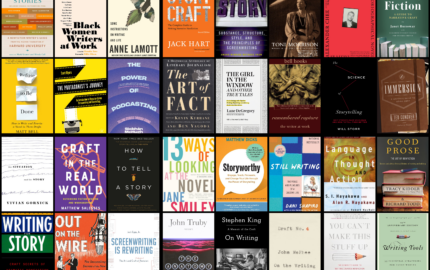EDITOR’S NOTE: In a series on making “good trouble” through journalism, Paul A. Kramer of Vanderbilt University argues for seven approaches that can help create partnerships between writers and readers in ways that can better address social problems. From his introduction: “The best narrative non-fiction writing on social problems … grapples with a particular social reality in order to question it, subject it to critical attention and convince readers that its existence and continuance is not inevitable.”
The fourth of the re-frames calls for re-specification: stories that help align tracing the root causes of current problems. Additional approaches will be posted this week and next.
You have something to do with why this problem is happening.
Responsibility work takes on things that readers know are problems — problems in which they are complicit and may even hurt people they care about but for which they don’t feel responsible. Readers may think that this isn’t their problem, not because it doesn’t affect them but because they don’t feel it is their fault.
Here the writer’s job is to show readers how, even without knowing it, they participate in instigating, permitting or perpetuating the problem through their actions or inactions. To do this, writers may need to take on readers’ assumed understandings of how causation works in the world and how far one’s responsibility extends.
Readers come to a piece with powerful but usually subterranean moral maps that tell them how far out their actions and inactions extend; these maps may be vastly inaccurate, tailored by political ideology and the pursuit of limited liability rather than by the demands of justice. So writers may need to establish causal connections that link one thing to another in ways that are compelling and believable even, or especially, if they are unconventional.

For an outstanding example of responsibility work, take Nicolas Niarchos’ New Yorker portrait in 2021 of cobalt extraction in Congo, “The Dark Side of Congo’s Cobalt Rush.” The piece reveals how, in the context of oppressive poverty resulting from colonialism, dictatorship and civil war, skyrocketing prices for cobalt have fueled a rush of dangerous mining in Congo. The industry is overseen by Chinese company officials and supplied by a hyper-exploited labor force that includes children as young as 4.
The article brings these realities home to the very technologies on which readers are likely reading it: Cobalt is currently an essential element in many electronic devices, preventing them from overheating. The piece makes clear exactly how much company profits and consumer convenience depend on harrowing, exploitative relationships. The author extends responsibility to readers, whose material goods and ways of living are tied to oppressive conditions they subsidize with their everyday choices, knowingly or not.
At one point, Niarchos asks Ziki, a former child cobalt miner, “what he thought of people who profited from cobalt mining. ‘I have sadness in my heart when I think of people who buy the minerals,’ he said. ‘They make so much money, and we have to stay like this.’ When I told him that Americans paid more than a thousand dollars for the latest iPhone, he replied, ‘It really hurts me to hear that.” Later, Niarchos notes that in 2016, Apple issued a self-exonerating statement stating that “underage labor is never tolerated” in their supply chains. “The following year, after a report by Sky News showed that cobalt mined by children was still being used in the company’s devices, Apple suspended purchases of hand-mined cobalt, but once the media attention died down the practice continued.”
Missteps in responsibility-focused stories can include simplistic and linear causal chains, or assigning responsibility to actors or institutions that aren’t really that blameworthy. There are conspiracy’s mental comforts, the tightly woven spider-charts of nefarious cause-and-effect. There is the risk of charging readers with complicity in a way that’s alienating rather than activating, perhaps with the writer casting themselves as righteous and blameless.
There’s also the opposite problem of not making a convincing case for responsibility, instead counting on readers to feel responsible before they are convinced. And there is always the danger of making the case for responsibility in ways that promote self-indulgent guilt.
But with attention and craft, there are balances to be struck here, which allow readers to encounter and experience responsibility in ways that remain joined to the people affected by their actions or inactions.
Related Posts
Introduction: Making good trouble
I. Exposure: Highlighting overlooked problems
II. Urgency: Revealing the immediacy of problems
III. Activation: Challenging a sense of powerlessness
IV. Re-specification: Reconsidering causes and effects of a problem
V. Solidarity: Standing with those affected
VI. Responsibility: Connecting action to consequence
VII. Value-switching: Considering different moral stances
Conclusion: The gift of narrative nonfiction
NEXT: Considering other value systems
***
Paul A. Kramer is an associate professor at Vanderbilt University, where he teaches history and non-fiction writing. He is the author of several academic studies and essays that have been published by major news sites. His book, “The Blood of Government,” has won several awards, including being named a finalist for the Philippines National Book Award in the social science category.



